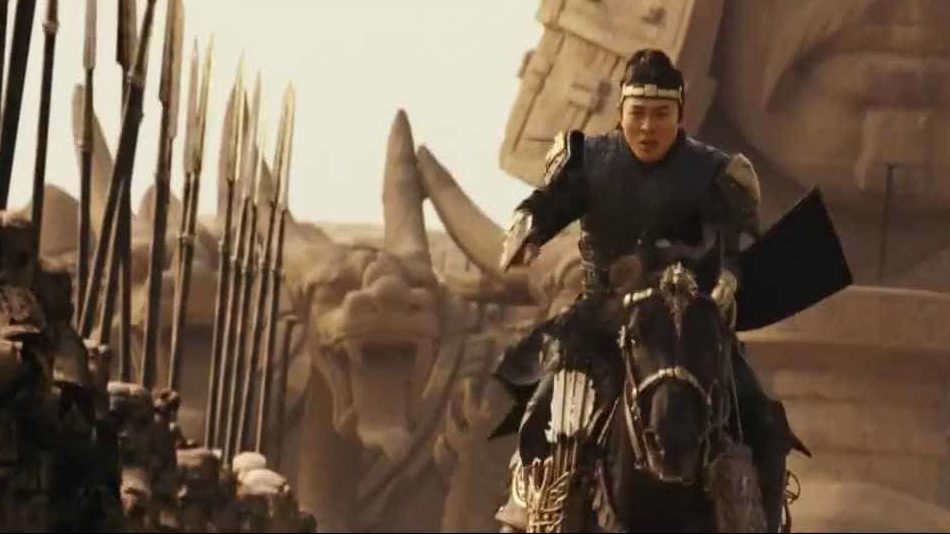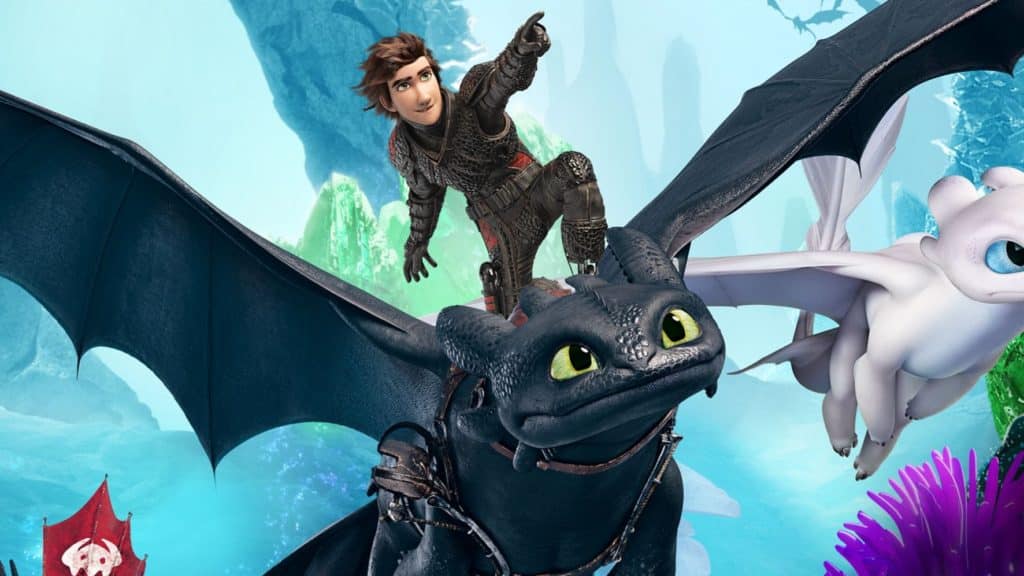Though the series of books may have ended years ago, the wizarding world of Harry Potter continues to enchant. Wizards, witches and You-Know-Who excite and stir the imaginations of all ages. And for us, nowhere is that more true than the world of Harry Potter dragons.
Though they clearly fall into the genre of wizard books, rather than dragon books, you’ll soon see why Harry Potter piqued our interest.
The fire breathing, sky cruising lizards have always been a part of the magical world since their first appearance in Harry Potter and the Sorcerer’s Stone where a young Norbert stole our undivided attention, all the way to the famous trios’ breathtaking escape from Gringotts bank.
The winged beings are classified as XXXXX by the Ministry of Magic, the highest rank of danger as they’re almost immune to magic. It takes quite a number of trials for a spell to affect them. However, as terrifying as dragons are, they provide many useful components used in potions and hexes. A dragon heartstring typically serves as a wand core.
To mere muggles, dragons are beasts out of myths. Such a belief is the fruit of the incredible efforts of Ministries of Magic across the world to hide them. Wizards with the ability to work with dragons, Charlie Weasley being an example, are called dragon keepers. There are also dragon feeders who are hired by Gringotts bank to take care of kept dragons.
Now that we’ve further piqued your interest, it’s time to summon your inner Dragonologist, for it’s time we take a look at the top 10 dragons in the Harry Potter realm!
Harry Potter Dragons – The Top Ten
- Norwegian Ridgeback
- Welsh Green
- Antipodean Opaleye
- Swedish Short-Snout
- Chinese Fireball
- Ukrainian Ironbelly
- Romanian Longhorn
- Hebridean Black
- Peruvian Vipertooth
- Hungarian Horntail
Norwegian Ridgeback
This dragon was the first of the Harry Potter dragons in the series. Hagrid wins an egg off a mysterious stranger in a pub and takes it home where he illegally keeps it after it hatches.
Hagrid takes care of his little dragon for a while until it grows too firey and violent to stay in his wooden hut. The feisty creature is then given to Charlie Weasley who eventually reveals that Norbert is actually Norberta.
A Ridgeback’s size isn’t known, but it’s said to be close to the Hungarian Hornback at 50 feet. Although they have venomous fangs, they aren’t as hostile as other dragons. It’s said that Ridgeback dragons love eating water-dwelling creatures and once reportedly consumed a whole baby whale.
Welsh Green
Measuring under 20 feet, the Welsh dragons are the smallest on our list. They are also the most common type to exist, residing in higher mountains where they can blend rather nicely with the green surroundings. Their diet mainly consists of sheep, staying away from human flesh.
This is the dragon you can see Fleur Delacour taking on during the Triwizard Tournament charming it to a deep slumber, which is pretty lucky for her considering that it doesn’t oppose much of a risk. However, the Ilfracombe incident did involve a Welsh green dragon attacking a muggle family at the beach. They were saved by the Toke wizard family, earning the Order of Merlin First Class award.
Antipodean Opaleye
When we talk about beauty, there’s no better candidate to speak of than the Antipodean Opaleye. This dragon’s name is inspired by his glittering multicolored pupil-less eyes. Its whole body is covered in luminous pearly scales, bringing its mesmerizing appearance to brand new heights.
The tongue-twisting name may make you want to take a course in how to say dragon in other languages, but this dragon actually comes from down under. Originating from New Zealand and Australia, these dragons feed on sheep, with a history of kangaroo hunting. The average size reaches about 40 feet, making up for the lack of ferocity.
Swedish Short-Snout
This is another of the Harry Potter dragons from a Triwizard Tournament face-off. The Swedish Short-Snout was the beast fought off by the Hufflepuff champion, Cedric Diggory. It has blue silvery skin which is widely used in making protective gloves and shields.
The rarely-seen azure dragon stands at a size of 22 feet. But despite being relatively small, the flame breath of the Short-Snout is the deadliest compared to other dragons, burning so hot, that it bears the color blue. This particular species takes to wild uninhabited mountains, away from curious eyes.
Chinese Fireball
Colored in the bright red of fury, the Chinese Fireball comes all the way from China to deliver some of the most dangerous blows a dragon can muster. Its eggs are heavily coveted, mainly due to the specks of gold decorating their shells. Chinese dragons, also called Liondragons, have golden spikes framing their snouted faces.
Viktor Krum had to face one of these dragons, for his first task in the Triwizard Tournament. The Chinese Fireball is very clever, cunning and agile, thanks to its size of 25 feet. Their temper is rather short getting aggravated easily. When angered, you better run fast! You don’t want to be there witnessing the infamous ball-shaped flames of terror.
Ukrainian Ironbelly
The largest breed ranking definitely goes to the Ukrainian Ironbelly dragon, earning its place with a size of 60 feet. This gigantic beast has metallic grey steel-hard scales, long razor-sharp talons, with eyes deepest of red.
Although not specifically mentioned, the Ironbelly is most probably the dragon our heroes Harry, Hermione, and Ron, rode to escape during their Gringotts bank adventure. That dragon was described having milky pink eyes, which may be the due to spending such a long time underground.
Romanian Longhorn
As with many of the Harry Potter dragons, the Romanian Longhorn is one of a group that have very descriptive dragon names. This dragon bears distinct long golden horns. The Longhorn even prefers to use their horns as weapons before sending out seething flames. They are green-colored, bulky and notably muscular.
Their native habitat, central Europe, became the go-to place for wizards passionate about dragon studies. Unfortunately, Longhorns were extremely endangered, seeing that their horns are precious ingredients for numerous potions, that breeding programs had to be initiated.
Hebridean Black
The Hebridean Black takes its name from an island off the west of Scotland, the Hebrides, which the dragon claimed as territory. They are an aggressive species, known to eat mainly deer, but sometimes dogs and cattle as well.
Their appearance is notable for having the darkest black scales, a spiked tail, and piercing purple eyes, creating unmatched intimidation. The bat-winged dragons can grow as big as 30 feet. Their raids are subdued thanks to the courageous Scottish MacFusty clan.
Peruvian Vipertooth
Only at 15 feet, the dragon native to Peru is the smallest of our monsters on the list. However, don’t let that fool you, as the Peruvian Vipertooth is easily one of the deadliest. This creature of spite is notoriously known for taking a liking to human flesh, killing more men, women and children than any other breed.
The extremely fast and stealthy dragon has smooth copper colored scales along with highly venomous fangs. Peruvian Vipertooth dragons are responsible for spreading the fatal Dragon Pox disease. They opposed such grave danger that the International Confederation of Wizards sent exterminators to reduce the Vipertooth population in the late nineteenth century.
Hungarian Horntail
Now we arrive at the single most unruly breed of Harry Potter dragons, the Hungarian Horntail. Starting with a horrifying appearance; bronze running all along its body, black scales, and yellow menacing eyes, this is a creature you seriously don’t want to mess with.
Harry was presented with the native Hungarian dragon during the Triwizard Tournament, where he barely managed to succeed after summoning his broom and using his speedy flying skills to get away.
As if that wasn’t bad enough, this vicious dragon can even shoot fire at a far distance reaching about 50 feet! With all the threatening traits and various ways to kill, the Hungarian Horntail undoubtedly proves why he is regarded as the most dangerous dragon of all.



